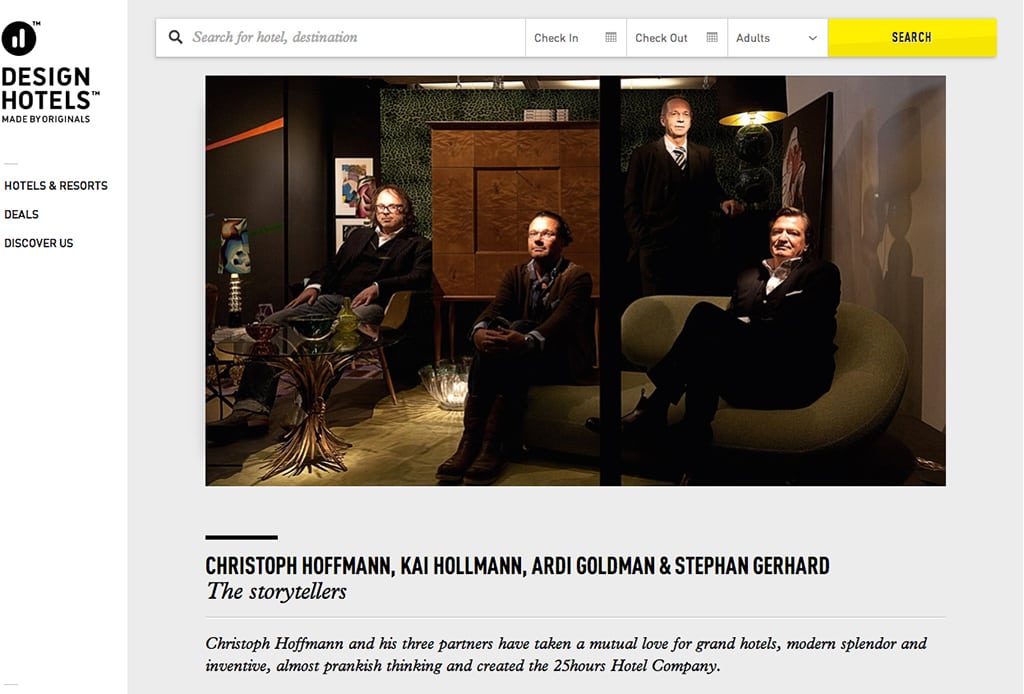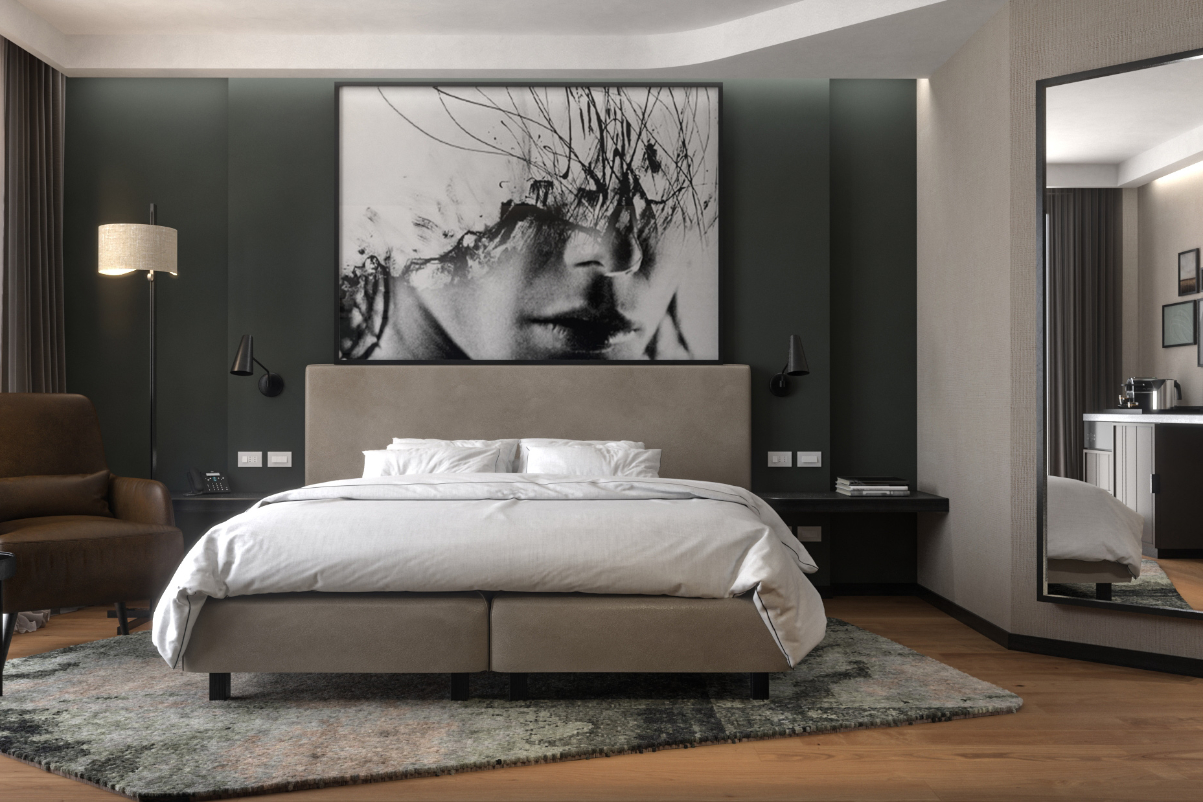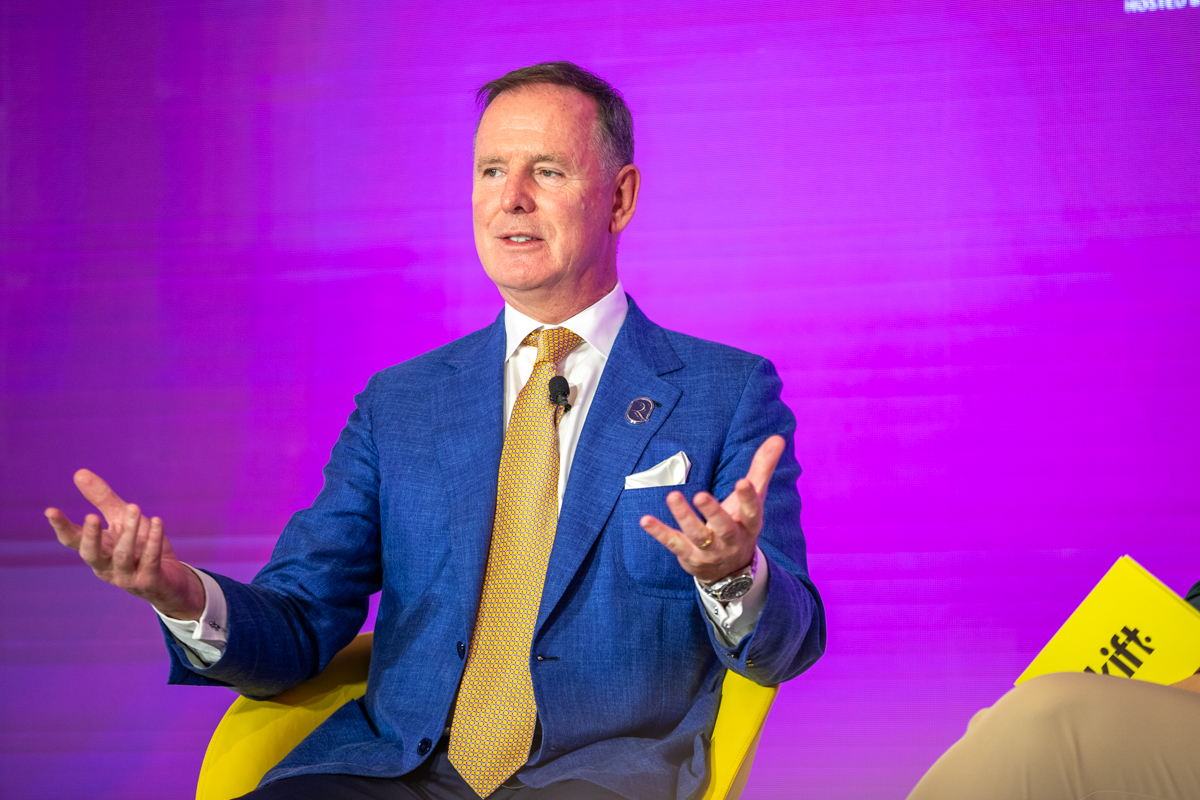Design Hotels' New Website Turns to Storytelling to Build the Brand

Skift Take
Claus Sendlinger, CEO of Design Hotels, must be shaking his head these days.
While the seismic shift toward content marketing is suddenly a hot topic today in hospitality and tourism circles, Sendlinger has been fine tuning the art of brand storytelling since the company’s inception in 1993.
Based in Berlin, Design Hotels is a network of 250 hotels in 46 countries. Boutique in size and demeanor, all of the hotels share a stridently confident and well-defined design vision. In February, after more than a year in development, the new designhotels.com launched as a culmination of Sendlinger’s efforts to create a community of hip hotels and design-conscious consumers.
“Our aim is to provide our community with a platform that is truly distinctive through its combination of recognition, value and experience—a travel companion rather than a brand extension,” says Sendlinger. “Overall, we have better integrated commerce and content. Booking a hotel is now a seamless and transparent experience where details on room types, sizes and rates are automatically shown.
"Our pages are also now longer and rich with videos, photos and behind-the-scenes information you won’t find anywhere else.”
Over the years, Sendlinger has ramped up the level and variety of content on the website and inside the hotels' in-room books, updated annually, which last year ran almost 200 pages. One of the most unique storytelling themes focuses on the creative, resolutely independent owners. Sendlinger calls them “The Originals.”
With the new website there's now a “Made by Originals” section on the homepage highlighting revolving hotel owners. This week it features the four partners behind the edgy 25hours Hotels group, framed by fashion magazine-style photography and lively editorial providing a glimpse into their lives.
“A decade ago a small independent hotel with individual design was a story in itself,” says Sendlinger. “These days people seek out deeper connections to the people and places they travel to, and that starts by choosing the right place to stay. Some stand out for their boundary-pushing architecture and design, others for their sustainable practices, while some are creative hives for a vibrant artistic scene.”
Another Design Hotels content initiative is “Finding Infinity,” focusing on the sustainability efforts of the owners. This is a big deal for Sendlinger and it’s a prerequisite for all member hotels entering the network.
The present Finding lnfinity edit on the homepage showcases STRAF in Milan, located just steps from the Duomo cathedral. Owner Sarah Mancino is hosting an art exhibit called “The Plastic Side of the Sea,” constructed out of degraded plastic found in the ocean.
The most impressive thing is the sheer volume of content on each dedicated hotel page, including: Originals and Infinity editorial, a large photo gallery, videos, destination info, architecture/interior design info, Google Maps, amenity details, package deals, and the booking engine.
The Pop-Up Phenomenon
With the launch of the new website, Sendlinger announced his third pop-up hotel: Maria Santa Teresa in Rio de Janeiro. He calls them “Projects.”
Sendlinger explained his fascination with all things pop-up at the LE Miami 2013 trade show last summer during his 32-minute talk: Creating Temporary Hospitality Experiences.
“Brands have done great pop-up or temporary experiences,” he said, citing examples like the Comme de Garçons fashion label. “[They] used their pop-up stores to represent ultimate creativity.”
Sendlinger explained that beginning in Berlin in 2004, the Comme de Garçons shops have also helped spur commercial interests in empty districts in cities around the world.
“When you look at their store in London, the Dover Street Market… and compare to the one in Tokyo, it’s something completely different, but really, really, really well curated,” he said. “That creates ultimate loyalty…. Pop-up definitely helps to create new audiences.”
The first pop-up Design Hotel was the Papaya Playa Project in Tulum in 2012, with 80 rundown beach cabanas overlooking what Sendlinger calls one of the most beautiful beaches in the world.
Originally, half of the cabanas didn’t have indoor bathrooms.
In 2011, the hotel was pulling in about $300,000 per year. Sendlinger hired 250 local workers and invested $650,000 in renovations after bringing in design teams from Berlin and Mexico City. All materials used to rebuild and decorate the property were sourced within 60 miles of the beach.
When Papaya Playa reopened, the international travel media covered it worldwide. Within six months, the resort attracted 6,500 likes on Facebook, and in March 2013 the hotel booked $500,000 in revenue for the month.
“But this only works with content,” said Sendlinger. “Everyone likes to write about new hotels but after it’s open, so what’s next? So I think we all agree that the key in the future [of hospitality] is absolutely content for multiple reasons.”
To keep the media buzz going after the initial fanfare, Sendlinger needed more cool stuff to create more cool content. He invited over some of Europe’s most innovative DJs from the illegal temporary club scene in Berlin, like Bar 25. They and their friends camped out at Papaya Playa for a month at a time, eventually drawing 600 people to the resort’s beach during weekends.
“It was a phenomenal engagement rate,” said Sendlinger. “Facebook became our #1 communication channel because we had something to communicate, which was relevant to most of these people, which was the new lineup for the next weekend.”
Papaya Playa continued to build “content” with a new pop-up ashram with Tibetan singing bowls, where guests could meditate and practice yoga. Within the next 12 months, the ashram was profiled 580 times in global travel media, including 10 covers.
“The media output with that thing was just unbelievable,” laughed Sendlinger. “So that motivated us to do more. So we brought in a phenomenal chef. This guys kills every animal he serves by himself…. He did a workshop and we had like 30 people coming, and learning from him how to cook the pork until the last piece. So no waste.”
Sendlinger then explained how he invited the New York Metropolitan Opera to come and sing on the beach. And they did.
“And still,” he said, “half of the cabanas have no bathrooms.”
We asked Sendlinger, why he thinks Papaya Playa and his second pop-up hotel, San Giorgio Mykonos, have been so well received.
“Our Projects are inherently temporary, which means they’re a less finished product than any of our full-fledged member hotels,” he said. “But it’s precisely this sense of experimentation and being able to participate in a fleeting experience with like-minded people that we find so alluring."
Greg Oates covers hotel/tourism development and travel brand media. He has toured over 1,000 hotels in 50+ countries. email / twitter




